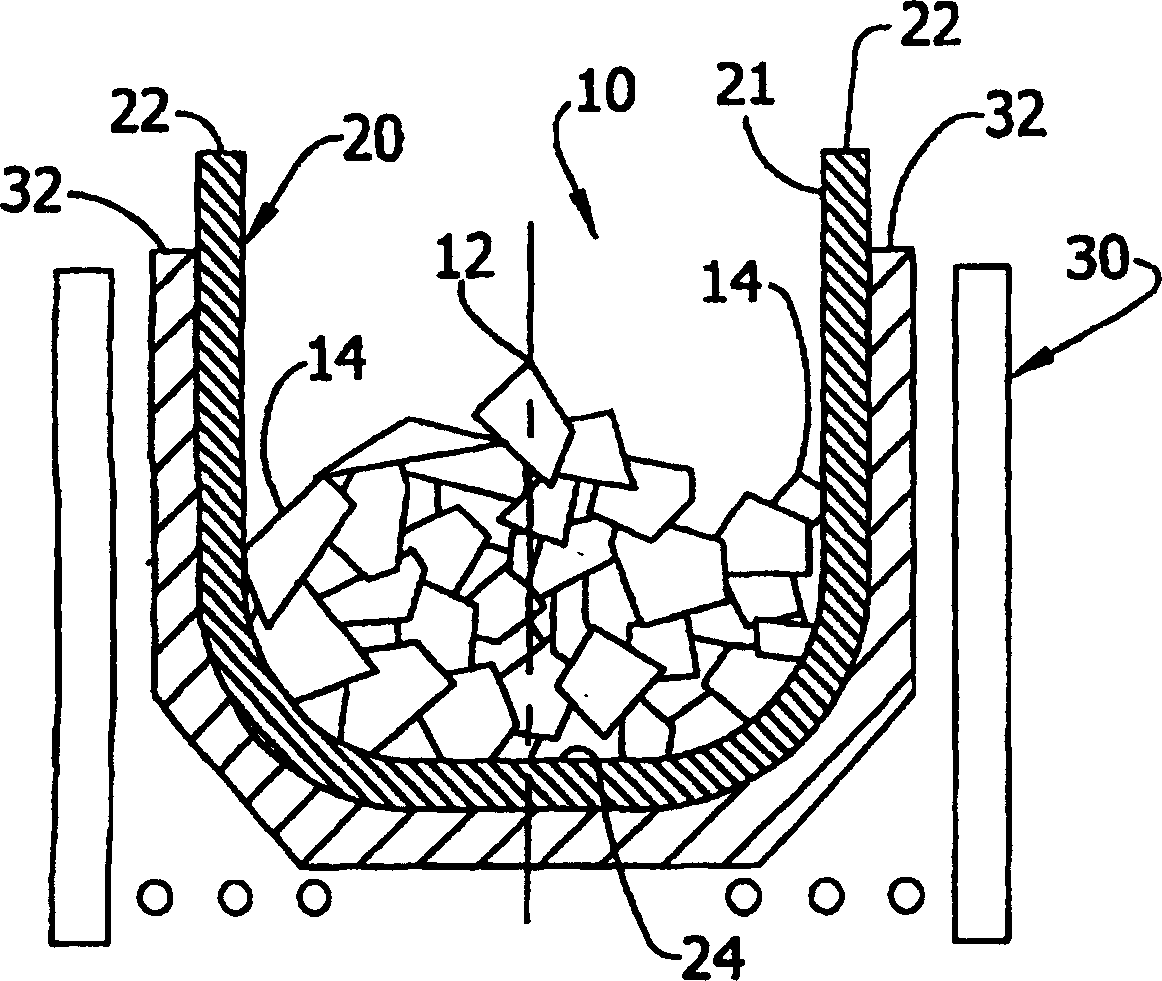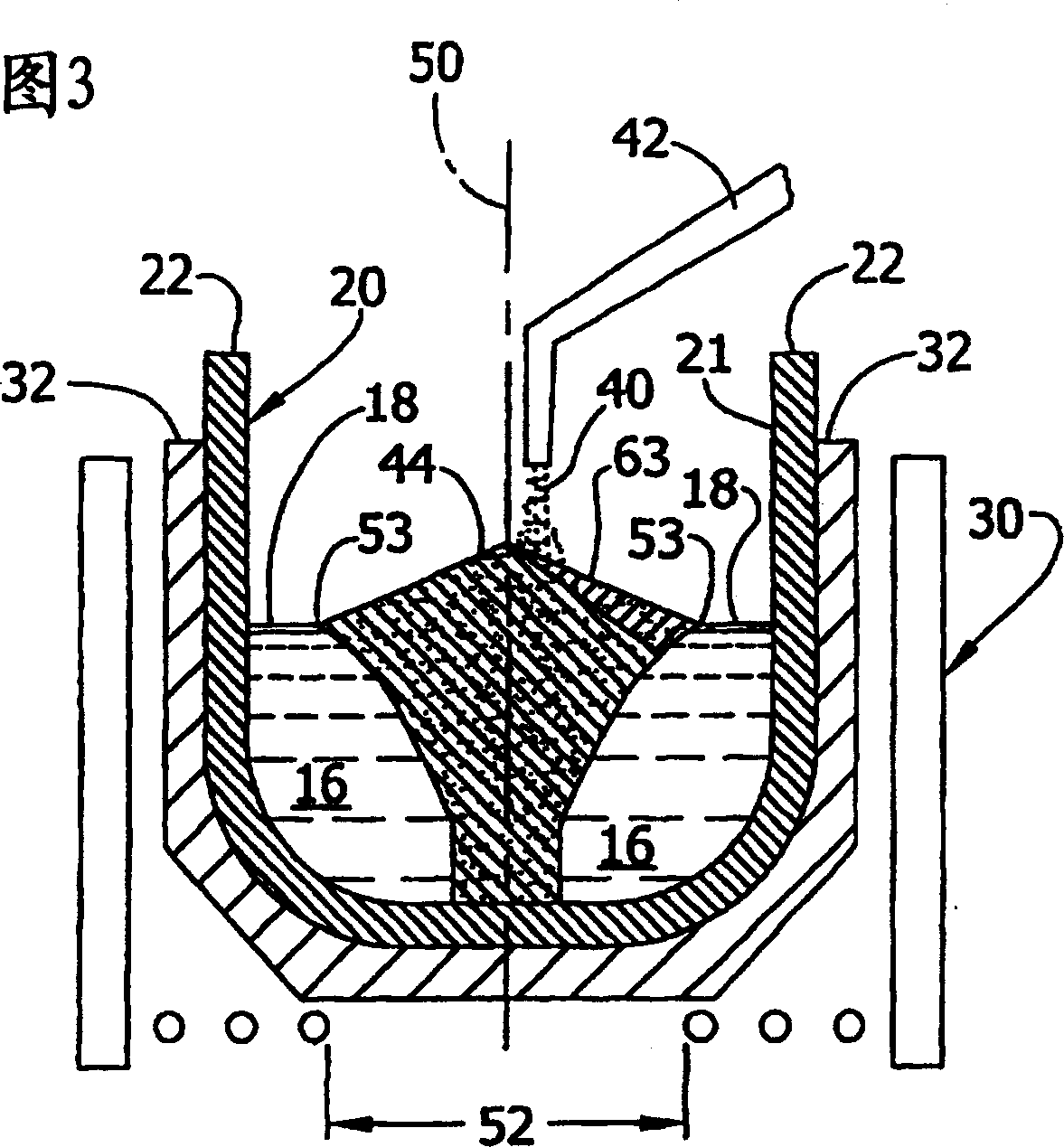Intermittent feeding technique for increasing the melting rate of polycrystalline silicon
A polysilicon, intermittent technology, applied in the direction of polycrystalline material growth, single crystal growth, single crystal growth, etc., can solve problems such as slow feeding rate
- Summary
- Abstract
- Description
- Claims
- Application Information
AI Technical Summary
Problems solved by technology
Method used
Image
Examples
example 1
[0060] Approximately 40 kg of chunk polycrystalline silicon was charged into a 20 inch (51 cm) diameter crucible and heated to form molten silicon and unmelted polycrystalline silicon. Using a vertical feed tube positioned slightly off the centerline of the crucible (about 15 mm) and about 10 inches (25 cm) above the melt surface, about 40 kg of granular polysilicon was added to the crucible for a total charge of about 80 kg. The granular polysilicon flow rate (f) was about 17 g / sec from the hopper through the injector tube and into the crucible.
[0061] The furnace side heater power was about 118 kW, and the crucible rotation speed (r) was about 2 RPM (revolutions per minute). The bulk polysilicon was partially melted after about 3.5 hours (ie, the diameter of the islet of polysilicon centered in the crucible was about 75% of the crucible diameter). Initially, the duration of the duty cycle (t on ) is set to about 5 seconds and the duration of the rest period (t off ) was...
example 2
[0065] Based on the tests detailed in Example 1, it was determined that the batch feed method can greatly increase the feed rate (F) at which the proper island width can be maintained, thereby reducing the Feeding time. Specifically, it can be determined that maximizing the degree of rotation between successive (successive) stacked wedges and the number of duty cycles before the feed material is re-(re)stacked on a particular portion or segment of the polysilicon islet is maximized, greatly Increased the flow rate at which islet size can be maintained at 75% of the crucible diameter.
[0066] In view of the above principles, an optimum set of parameters was determined and tested to maximize the feed / melt rate of granular polysilicon in the loaded crucible. As in Example 1, the crucible was initially loaded with 40 kg chunk polycrystalline silicon, the gravity feeder delivered granular polycrystalline silicon at a flow rate (f) of about 17 g / s, and the side heater power was ab...
PUM
| Property | Measurement | Unit |
|---|---|---|
| angle | aaaaa | aaaaa |
Abstract
Description
Claims
Application Information
 Login to View More
Login to View More - R&D
- Intellectual Property
- Life Sciences
- Materials
- Tech Scout
- Unparalleled Data Quality
- Higher Quality Content
- 60% Fewer Hallucinations
Browse by: Latest US Patents, China's latest patents, Technical Efficacy Thesaurus, Application Domain, Technology Topic, Popular Technical Reports.
© 2025 PatSnap. All rights reserved.Legal|Privacy policy|Modern Slavery Act Transparency Statement|Sitemap|About US| Contact US: help@patsnap.com



